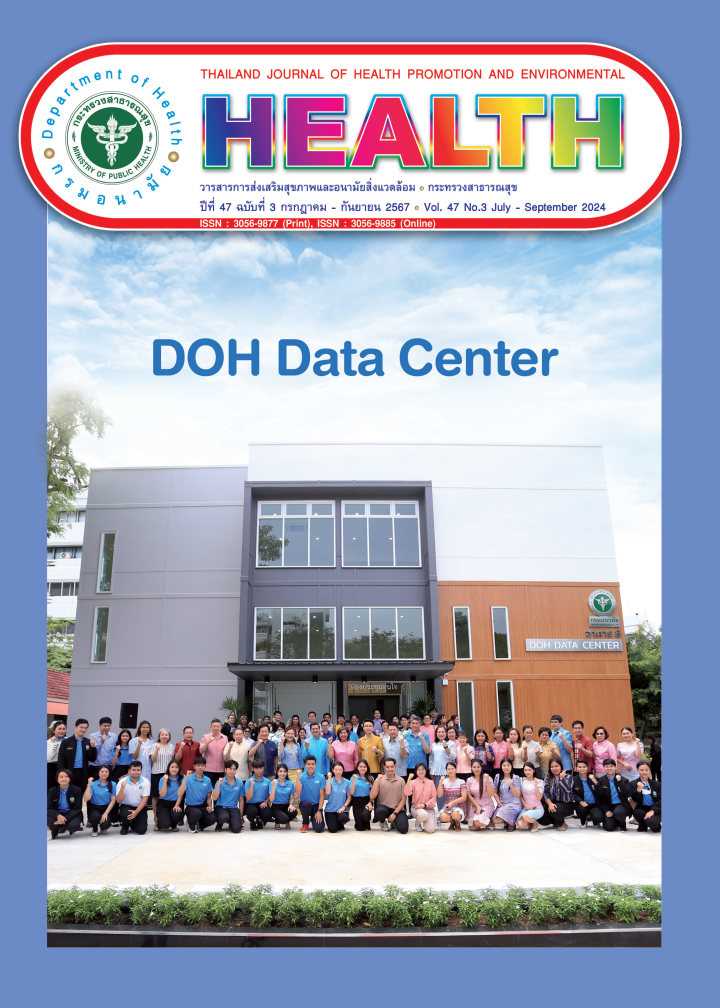Situation, Needs, and Good-Guideline Practices of Family Friendly Workplace (FFW) among Health Promotion Centers, Department of Health
Keywords:
Family Friendly Workplace, Good-Guideline Practices, Regional Health Promotion CenterAbstract
This study investigates the current situation, needs, and good practices to create a familyfriendly workplace (FFW) among personnel at Regional Health Promotion Centers, Department of Health. A mixed-methods study was employed in two phases. In phase 1 qualitative study, qualitative data was collected through in-depth interviews with 5 directors and focus group discussions with 35 personnel to explore the existing situation, needs, and practices to create the FFW. Five key areas were identified: work flexibility, childcare, parental care, income generation, and child allowance. Some centers demonstrated good practices, such as halving childcare costs, cultivating vegetable gardens or providing income-generating services, and offering members savings and cooperative store benefits. In phase 2 quantitative study, a survey was conducted using Google Forms to collect quantitative data from 234 randomly selected personnel aged 20-49 from all health regions. The majority were females, with an average age of 37.74 years, holding at least a bachelor’s degree. Over half were married, while one-third were single and had mixed feelings about marriage. Economic concerns and lack of childcare were cited as reasons for not wanting to marry. Those who desired marriage sought to have a family and children. Respondents recognized the declining birth rate as a pressing national issue requiring collective action. They expressed a need for support in five areas: work flexibility (e.g., having freedom to work according to government regulations, complete work in time, and online meetings), childcare (e.g., subsidized childcare, indoor playrooms/playgrounds for school holidays, and 15-day paternity leave for both permanent and temporary employees), elderly parent care (e.g., leave for sick care, welfare/funeral funds, and hospital visitation benefits), income generation (e.g., income-generating activities, cooperatives/welfare stores, and off-site service provision), and child allowance (e.g.,scholarships/academic awards, educational loans). Recommended practices to create the FFW include organizing community forums to raise awareness and foster participation, prioritizing possible areas for action such as halving childcare costs, providing children’s accommodation during school holidays, promoting income generation within the organization, and extending paternity leave to both permanent and temporary employees. The findings of this study can serve as a guideline for other government agencies to develop plans to create FFWs, thereby encouraging working-age adults to plan for childbearing and contribute to increasing the country’s population.
Downloads
Published
Issue
Section
License
Copyright (c) 2024 Thailand journal of Health Promotion and Environmental Health

This work is licensed under a Creative Commons Attribution-NonCommercial-NoDerivatives 4.0 International License.

